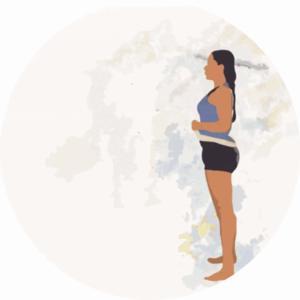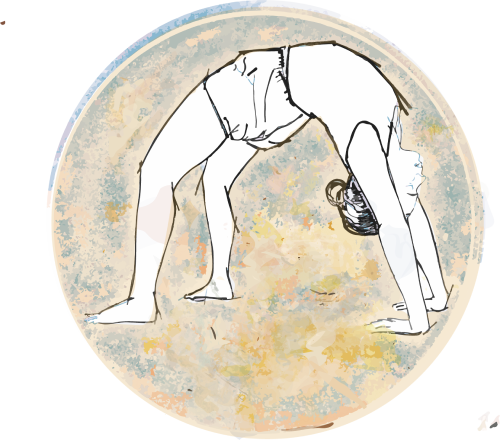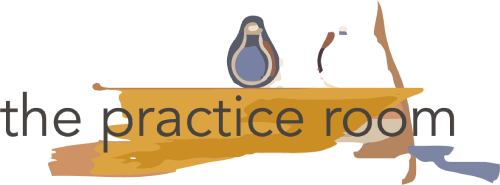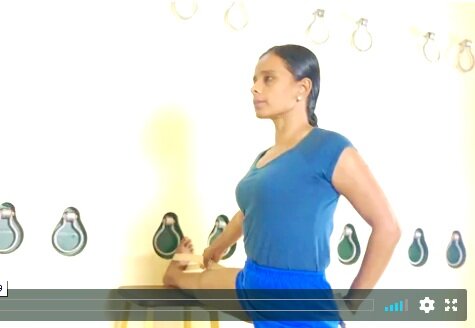[vc_row][vc_column][vc_column_text](After two years of writing yoganusasanam summaries, it gives us immense joy to publish these accounts written by the practice room students. Only 2-3 years since they came to their first class with us, two of our students participatede in yoganusasanam2016. first yoganusasanam. first trip to RIMYI. teachings from Geetaji over 4 days. how lucky can a student of yoga get! To give them due credit, these are incisively written accounts that will be useful for all practitioners to read.)
This first account is from priyanktha iyengar:
“Three thing stuck with me the most after this workshop.
1. We spent more than an hour practicing for headstand before we actually went up. I was sweating profusely and waiting for this ordeal to get over. Finally when geetaji did ask us to go up, i experienced a lightness in my legs and they went up without much fight thanks to the practice she gave us before. Because i went up more easily than usual i was able to listen to some of the other instructions and incorporate them. The revelation came to me that there is no shortcut to practice. Also because i hadn’t practiced at all for this workshop, i realised would have been able to get way more out of this experience had i been better prepared. My evolution and growth graph is directly proportional to practice.
2. Geetaji was unhappy with the span of our legs in standing asanas. So on day 2, In preparation for prasaritapadottanasana, we were made to go deeper in suptapadangushtasan 1 and 2. When i got up i had new found sensations (pain mostly) in my back thighs and buttocks. When we finally went down into prasaritapadottanasana, for the 1st time my head actually touched the ground… albeit pretty far from where its supposed to be, but still, on the ground. Geetaji then spoke about how stiffness in the body is like knots. These need to be untangled and released for us to be able to make the body work the way we want.
3. Every part of the body needs to be trained to follow the instructions of the brain in my asana practice. More so the posterior body which i cant see and therefore am less sensitive to. In all squatting poses like utkatasana, virabhadrasan 2 and a few forward bends i realised i am unsuccessful in compacting my hips and for the most part lack sensitivity in that area. I only got this in spurts, and then lost it. I realise that i need to train my hip muscles and buttocks to listen to the instruction and follow them, keep making an effort consciously.”
The second account is from Mahesh Devaiah.
“What struck me instantly was the enthusiasm with which we were taught. Geetaji had obviously done thousands of classes like this but the sheer desire to impart the knowledge and wisdom within her was so apparent – all this despite being in obvious discomfort. The absolute knowledge of the human body, along with a deep understanding of the sutras, and being able to correlate them and communicate with so much sincerity, conviction, finesse, humour and expertise gave us students a clear reason as to the how and why of an asana and yoga as a subject. She had to structure the class to cover students with widely varying abilities. She did that seamlessly, sympathetically with constant improvisation. The utmost humility and submission to the subject of yoga was an inspiration and a privilege to witness.
The format of the workshop was doing an asana followed by a detailed explanation of the correct expected position and benefits. Whilst, there were several invaluable tips and multiple corrections over the 4 days, I have tried to record below my main takeaways:
1. Prior to commencing practice the state of mind should be neutral with the sole focus on the practice. All external stimuli, irritation and frustration should be reduced. This can be achieved with asanas like adhomukha virasana.
2. For standing asanas the basic norms are: (i) legs should be absolutely straight; (ii) buttocks sharply in the body; (iii) buttocks and shoulder in the same line (iv) the tailbone should be tucked in causing an indentation at the root of outer thigh (v) that indentation should be a marker for the asanas (in a parivrita action the indentation should move towards each other and intersect); (vi) clear demarcation between (a) thorax and abdomen; (b) shoulder and arms; and (c) root of thigh and legs.
3. For forward bends: (i) the back intercostal muscles should separate; (ii) the dorsal thoracic back which has a natural tendency to pop out has to be pumped in; (iii) The breath should be used as a weight to lower the back brain and spine.
4. For inversions: (i) sarvangasana – the entire back body must be fully extended to the ceiling and the body should rest on the entire shoulder bone (not on the arms); side body fully extended; (ii) sirsasana – the effort should be to ensure that the front body is fully extended including lifting the pubic bone.
5. General things to remember:
(i) Armpit is a window to the chest and sternum and to be kept as open as possible (achieved by rotating the tricep towards the face);
(ii) Wrist to be dipped slightly in standing asanas with fingers upward and extending;
(iii) Visualize both the outer body and inner body when doing the asana – scan the whole body and adjust;
(iv) Distance of the feet to be such that both the buttocks can be distinctly felt;
(v) The unused and rigid parts of the body contain muscular knots. These knots can be gradually removed by holding a stretch resulting in flexibility;
(vi) Use floating ribs as a marker – slightly back in standing asanas and move along the length of the body ion forward bends[/vc_column_text][/vc_column][/vc_row]



